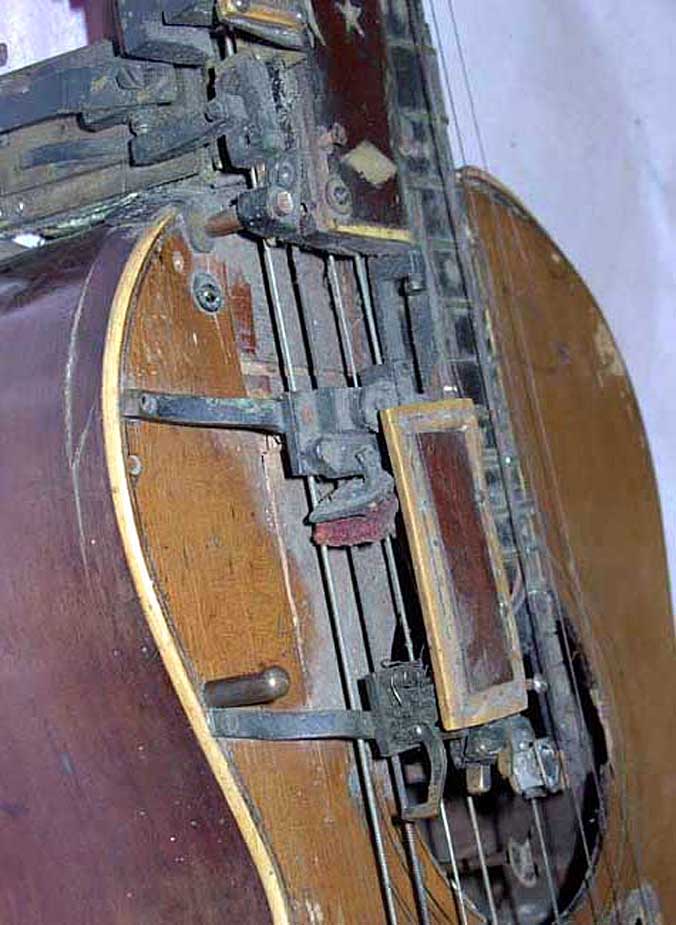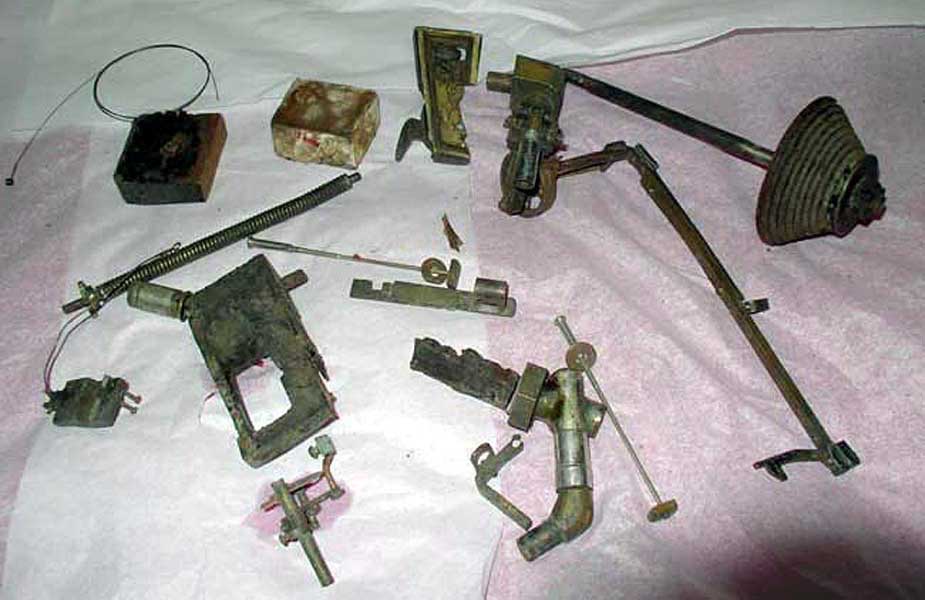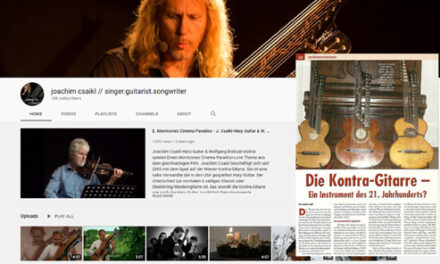Yes, it’s Christmas morning, and in keeping with the nostalgia theme of Jaci’s and my annual holiday card, here’s a tribute to all the fathers (and less I sound too 2016 politically incorrect, a mother or two) who ever had to unfold those detailed yet inarticulate plans and actually try to assemble the attractive item pictured on the colorful box that “Santa” left for their anxious son or daughter.
This project takes the cake! If you consider yourself at all “handy,” or even if you’re an expert machinist or mechanical restorer, scroll through all of the photos below and see if your face doesn’t turn white from disbelief and/or terror.
Last week someone posted an old Mugwumps magazine picture on my Facebook page, which reminded me that I never published any of this on Harpguitars.net. There are a couple reasons for the omission. First, the instrument below isn’t a harp guitar, so is outside the normal purview of this site. Secondly, I had been waiting for news from the main character of the “assembly project” story to report back. My guess is that that’ll be literally (to continue the winter theme) when hell freezes over. Additionally, a descendant of the original maker who had contacted me had also fallen through the cracks. This remarkable story has yet to be concluded, but that is for someone else at some future time.
You’ve seen a lot of weird instruments – and weirder players – on this site over the years, one of the more curious perhaps being this one:
![]()
Professor DeMain Wood – remember? As he explained it to his friends at The Cadenza magazine in 1906, his modifications to a simple 6-string Washburn guitar allegedly took him eighteen years of invention, experimentation and execution. Other articles suggested different time frames – a 1903 article quoted “twenty years in his leisure moments,” while an 1897 piece mentioned “perfecting it” over “several years.”
Those latter two articles were reproduced a long time ago in Mugwumps magazine, and there are several other small articles and mentions of Woods giving small concerts on his “Orchestral Guitar” from August, 1897 (Scientific American) up to at least December, 1926 (Rochester, New York’s Democrat and Chronicle). His creation – and performances on it – appear then to have been in the public eye – at least at a local level – for a good three decades. I don’t think the Cadenza article has ever been published, so I’ll do so here.
Prof. Woods and his instrument never seem to have been regarded as “a novelty,” but with fascination and respect. As both a player, teacher and mandolin-guitar club leader, Wood was undoubtedly a member of the American Guild of Banjoists, Mandolinists & Guitarists and loyal subscriber to The Cadenza, its associated publication. The Guild booked him for their 5th annual convention in 1906, and by their more specific, detailed account, Wood’s creation seems to have worked implausibly well, both mechanically and musically.
 After his picture appeared in the March, 1906 issue, announcing his inclusion in the American Guild’s 5th Annual Convention, they published a little teaser for his convention appearance the next month.
After his picture appeared in the March, 1906 issue, announcing his inclusion in the American Guild’s 5th Annual Convention, they published a little teaser for his convention appearance the next month.
The following month, a detailed article on Wood’s Orchestral Guitar appeared, describing its “six wonderful attachments.” You’ll want to read the entire laundry list of Wood’s impossible-but-true effects that imitated the sounds of mandolin, cello and the human voice on his ingeniously engineered and fully mechanized Washburn guitar.
In 2005, I was contacted by a great granddaughter of Wood’s, Rita, who volunteered to share her family’s saved vintage photos and news clippings (which sadly never transpired, after which I soon lost touch). She disclosed that Wood had “died unexpectedly at age 52 in Aledo where he had a music store and taught and composed music.” Interestingly, there was in 2005 a man who did presentations on Professor Wood in connection with the Aledo Historical Museum.
As far as his singular instrument, after 1926, no word of it was ever heard again…
…until 2004, when unbelievably it showed up on eBay!

Obviously, this was one item offered “as is.” As fascinated as I was, this was one “unusual instrument” I decided the Miner Museum might need do without (though I did bid something – thinking someone should preserve what was left of it). Ultimately, it went fairly cheap, and the lucky(?) winner contacted me shortly after, clearly excited and determined to do all he could to bring it back to life.
Ike Miller, the new owner (a left-handed guitarist) was at that time hoping to apply for a grant of some sort for the several thousand dollars he imagined would be required “to restore this amazing one of a kind instrument…including costs for making duplicate working prototypes of mechanics, etc.” I was impressed by his seriousness and plans, of which he explained “I am interested in getting it into a museum and/or finding a competent soul to decipher the intended tuning and actually learn to PLAY this thing.”
Alas, the web site he intended to create to show the project’s progress never materialized, and I never heard from him again (my most recent query is pending). But I certainly wouldn’t begrudge him if the prospect appeared too daunting!
Again, all you tinkerers: read the Cadenza piece above to get an idea of what this thing did, then blow up all the images I archived from the eBay listing (enhancing all as best I could) and try to envision how all this worked…and how much effort Woods must have put into machining and testing – before learning to play it!
Merry Christmas Mr. Woods, wherever you are, and God bless Ike.




















And you know you’re really in trouble when you see there are parts left over!







I did a drawing of this instrument for Mugwumps magazine back in the 1970s but really, my drawing was of no real significance as I only had the photograph of Prof. Demain Wood holding the instrument (which you have above in this article.) I’m sorry that I can’t add any new information to this fascinating story. I hope that someone was able to restore this thing.
Has there been any updates on this instrument?
Sadly, no.
Looks that way – wowza! :+) SPS
This is the guitar equivalent of the Antikythera mechanism! What a shame that it was allowed to deteriorate so badly. Is it a restorer’s pipe dream or nightmare? I wonder if it will ever resurface again…….
The predecessor to Steampunk Stacey!